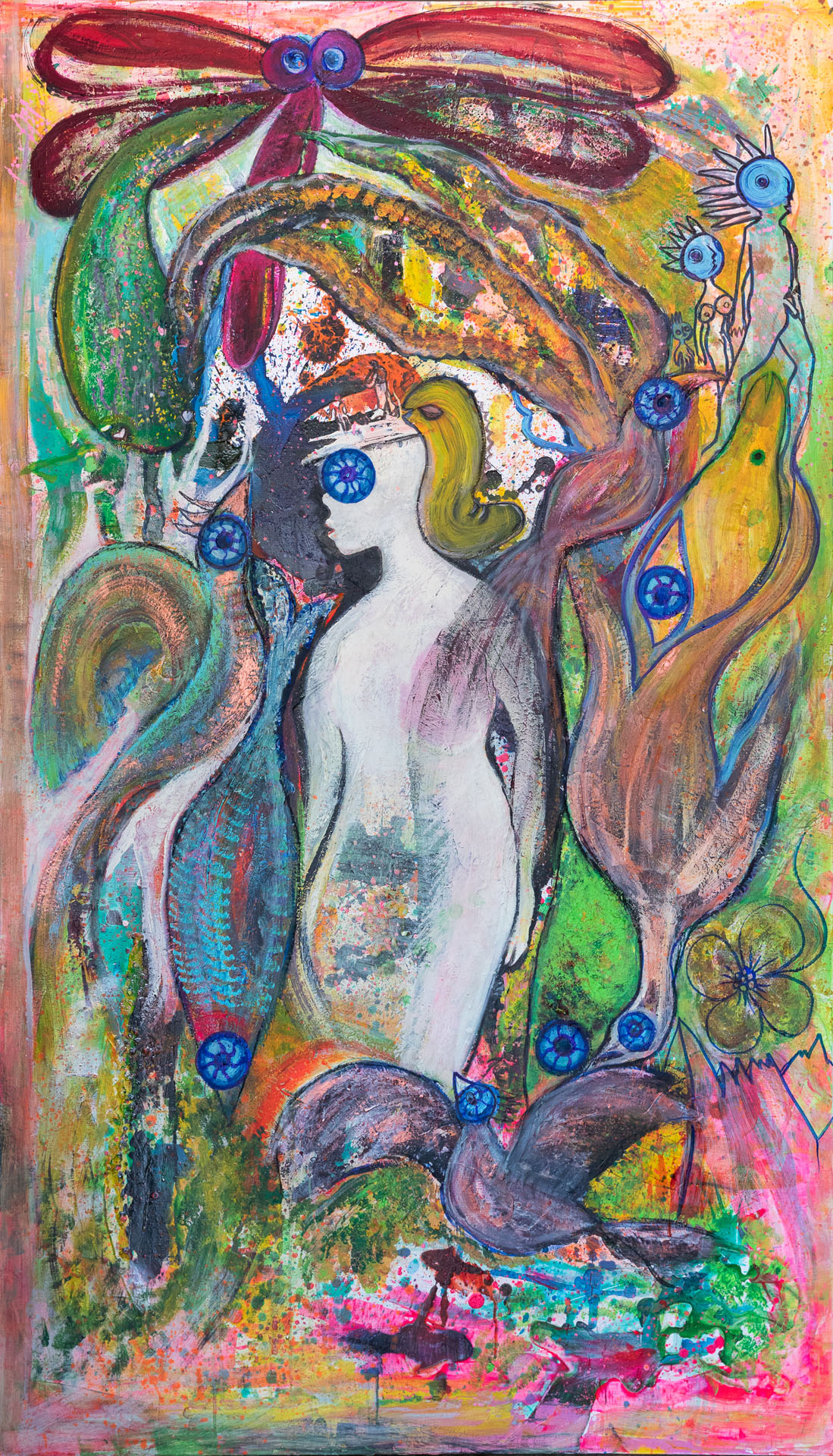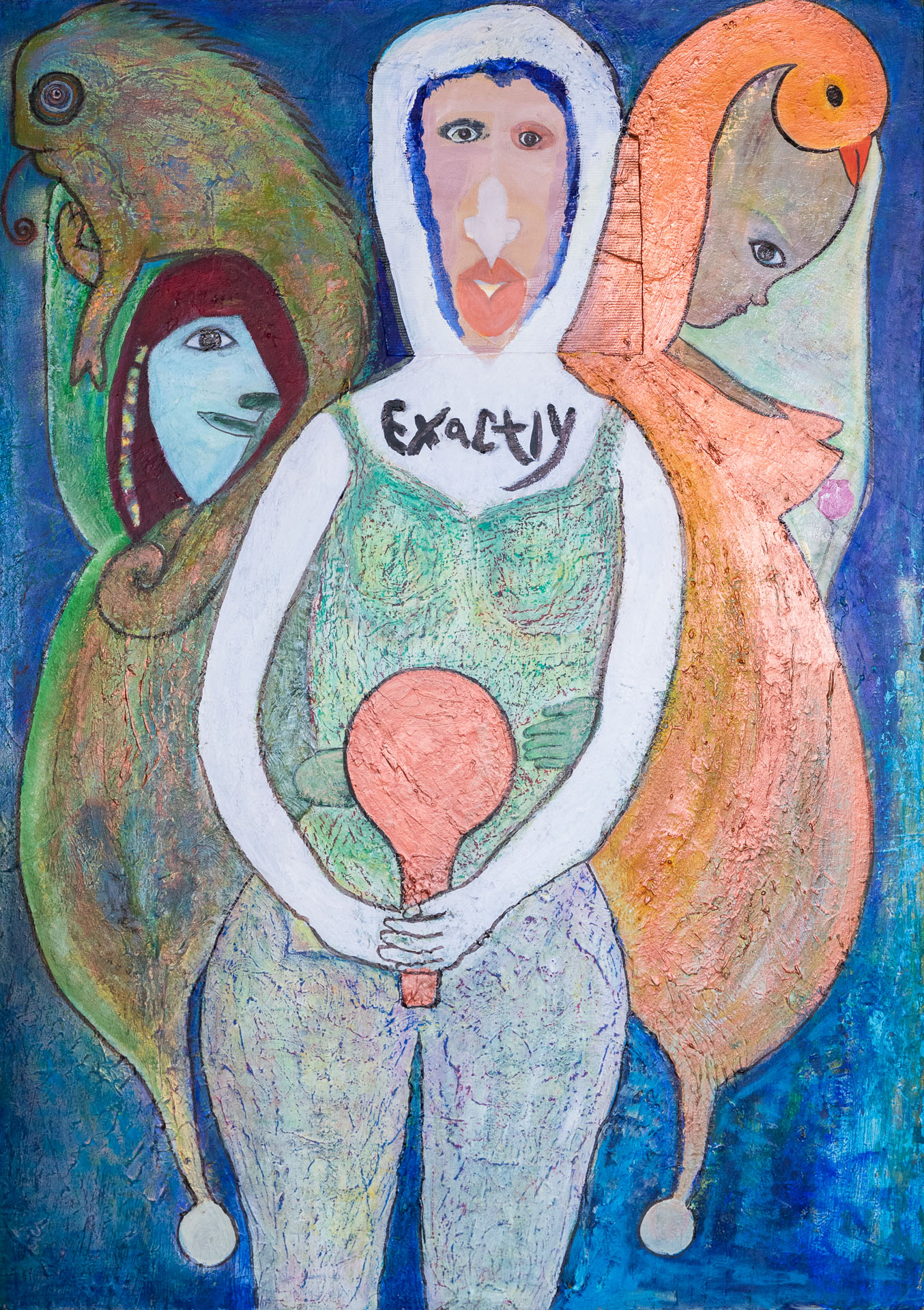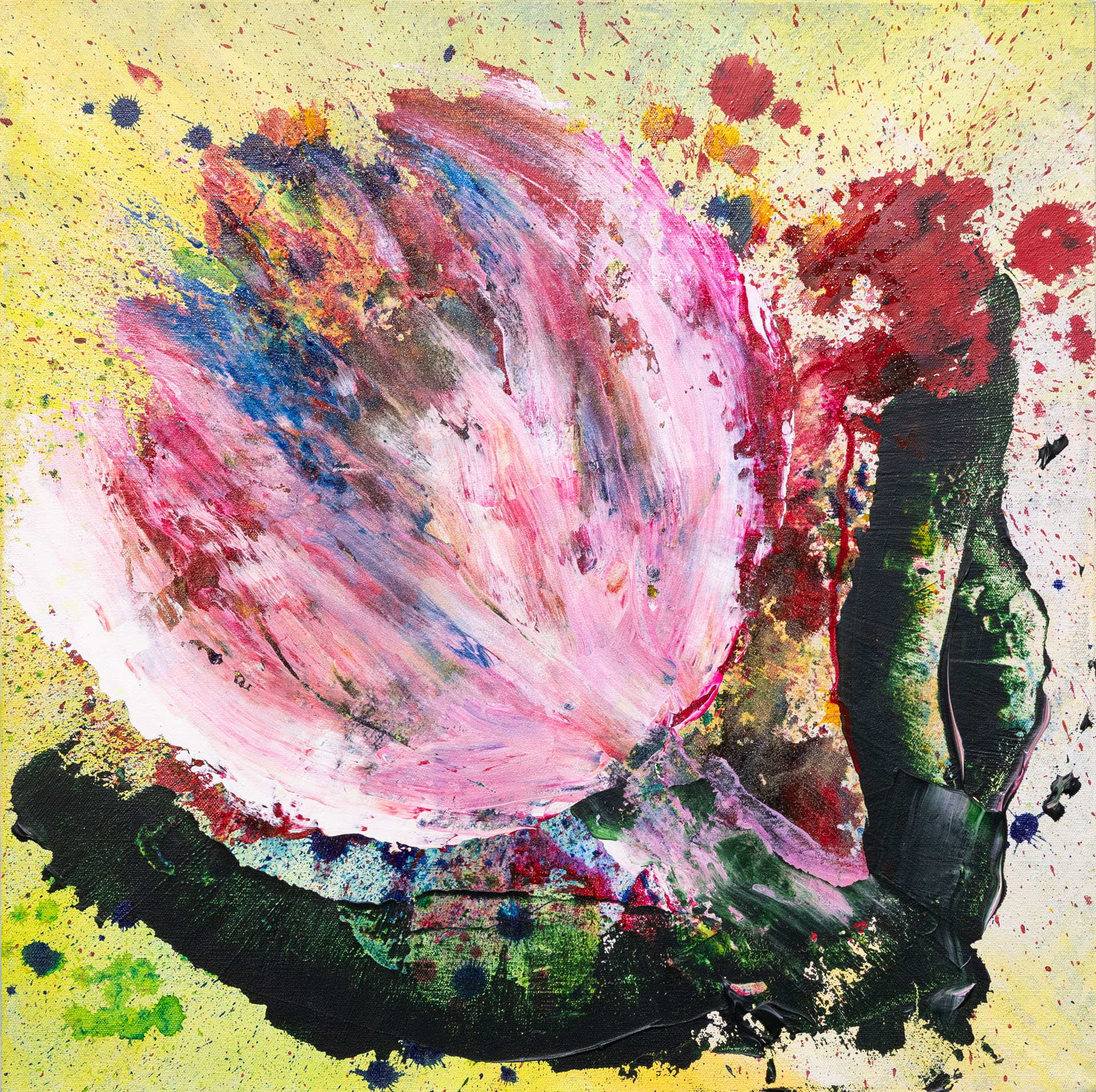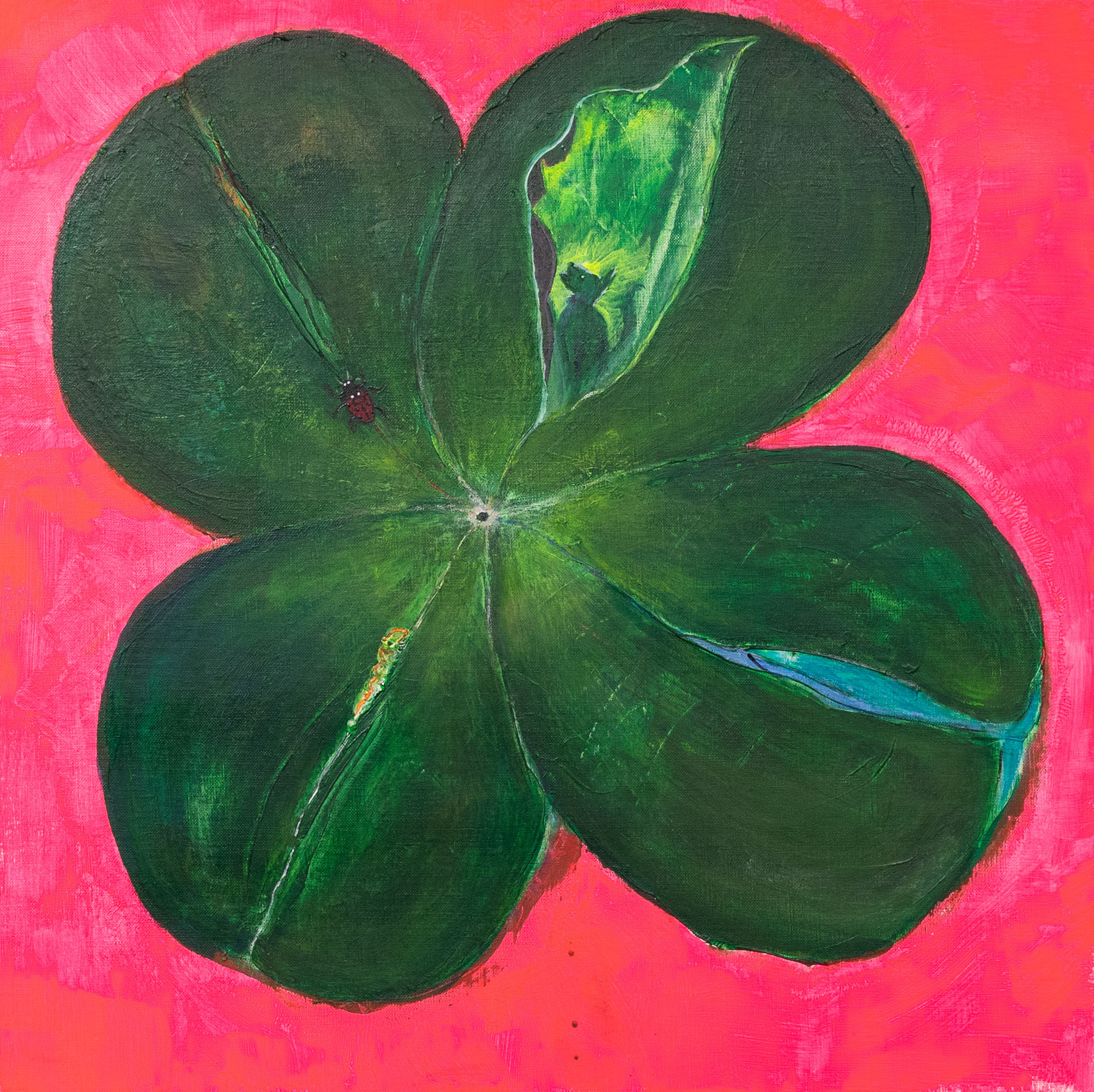A story full of colour
This year marks exactly 10 years since he started painting at the age of 63. "I want everyone to see the whole story in my head, from the things I've carried with me through my life to the things that just came out naturally," he says of the exhibition "story in my head." The exhibition will feature about 30 pieces, including three-dimensional pieces such as vases, with a focus on new works.
Junko Asano was born in Yokohama, Kanagawa Prefecture in 1950. Actor Tadanobu Asano is her daughter, and SUMIRE, currently active as a model and artist, is her granddaughter. Asano, who was a "delinquent runaway girl," frequented bars and nightclubs where American soldiers and their associates gathered from the 1960s onwards, and had a front-row seat to the birth of all manner of cultures, including rock and roll, which began with Elvis Presley, and the hippie movement.
"In an era when miniskirts weren't even sold, I would paint second-hand clothes, embroider them, or make my own clothes and go dancing at discos with my best friend. I also customised my own furniture and tableware. Those life experiences shaped me into the artist I am today."
She showed her talents by selling remade clothes, running a second-hand clothing store and a bar, but she says, "I got bored easily, and none of them lasted more than three years." But art was a constant in her life. She would draw receipts, flyers, and whatever else came to mind in her free time.
Drawing new discoveries every day
When he was about 60 years old, he met an artist who encouraged him to start painting in earnest. "I noticed things that I hadn't noticed before, and they all came flooding out to me all at once." A new creative drive began to fill Asano's life.
"When I look at a blank piece of paper, a picture emerges. I make new discoveries every day and draw on them, so the finished painting changes after a week."
He started drawing without making a preliminary sketch, and recently he has been drawing endlessly every day, even using the image editing function of his smartphone camera. He has been obsessed with drawing for 10 years, and a definite image has been formed by continuing to change.
"After 10 years of drawing, I've become able to draw beautiful circles and straight lines. At first, even the round shapes were a little distorted, and I couldn't draw straight lines perfectly. I was lost somewhere. But that's gone now."
"Exactly" depicts a woman gazing at us with eyes watering with anxiety. Nearby are women who are being held by chameleons and birds. One of them has a fearless smile, the other has a somewhat nihilistic gaze. The woman in the middle is holding a mirror. Asano says that he is conveying the importance of constantly looking at oneself.
"We live in a world where it's hard to tell what's real and what's a lie. In a world where people are discriminated against because of skin color or gender, and where the idea that it's okay as long as you're happy is so prevalent, I want people to look at themselves and value themselves more than anything else."
In "Red Dragonfly," a human of uncertain gender is depicted surrounded by giant dragonflies and tropical birds and plants. The human's eyes and the bird's head resemble snail shells. There is also an imaginary creature with a bird's head and a body that could be described as both human and birdman. This work was created in response to a mixture of anxiety about food shortages and climate change, and a desire to "see what the Earth will be like 50 years from now."
Motherhood is the fountain of creativity
Chameleons and snails, colorful plants, cityscapes at dusk, and hostesses living in the nocturnal world... Asano paints dreamlike motifs with clear contours and elegant colors. From these we can read nostalgia and deep affection for the people and things he has loved in life.
Asano's works exude a maternal love. This is heavily influenced by her family, and her mother in particular. As a returnee from the war and a mother to a man from a foreign country, it is not hard to imagine that her mother was viewed harshly by those around her at the time. However, memories of her mother, such as her performing arts as a geisha, Nagauta (a traditional Japanese folk song) and dance, and the time and effort she took to cook red beans for Asano on his birthday, are fertile soil for Asano's life, as she continued to be the woman she wanted to be.
Junko Asano says that even when she truly wants to accomplish something, the next moment she feels like destroying it, and she continues to create new works, not limited to canvases but also to blackboards, cardboard, torsos, and other media. The source of her creativity is an all-encompassing kindness. She is a motherly artist.








